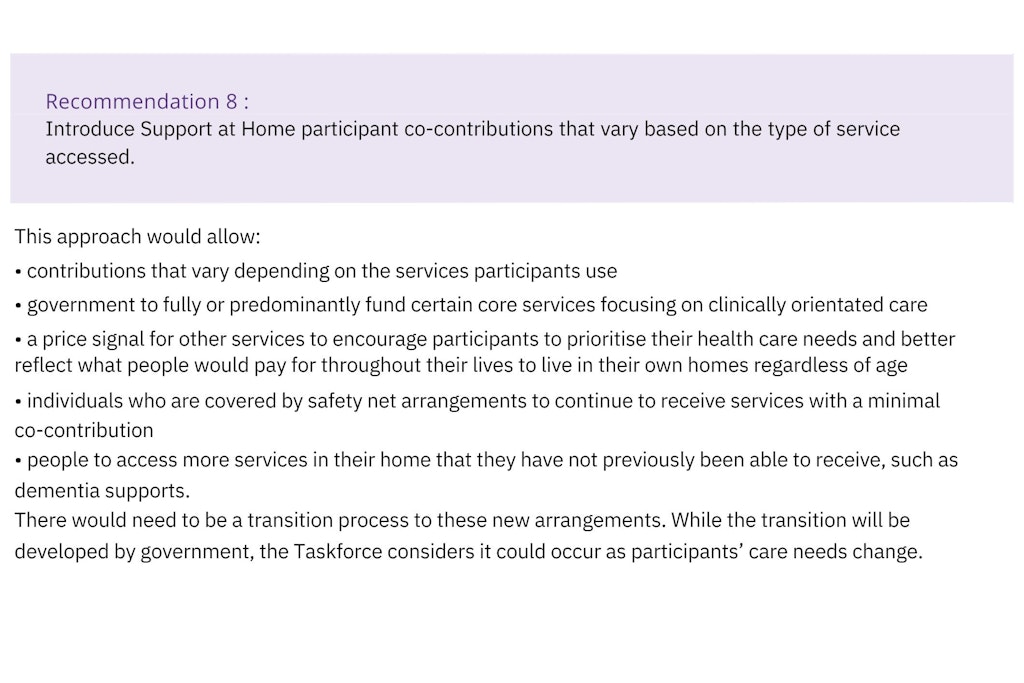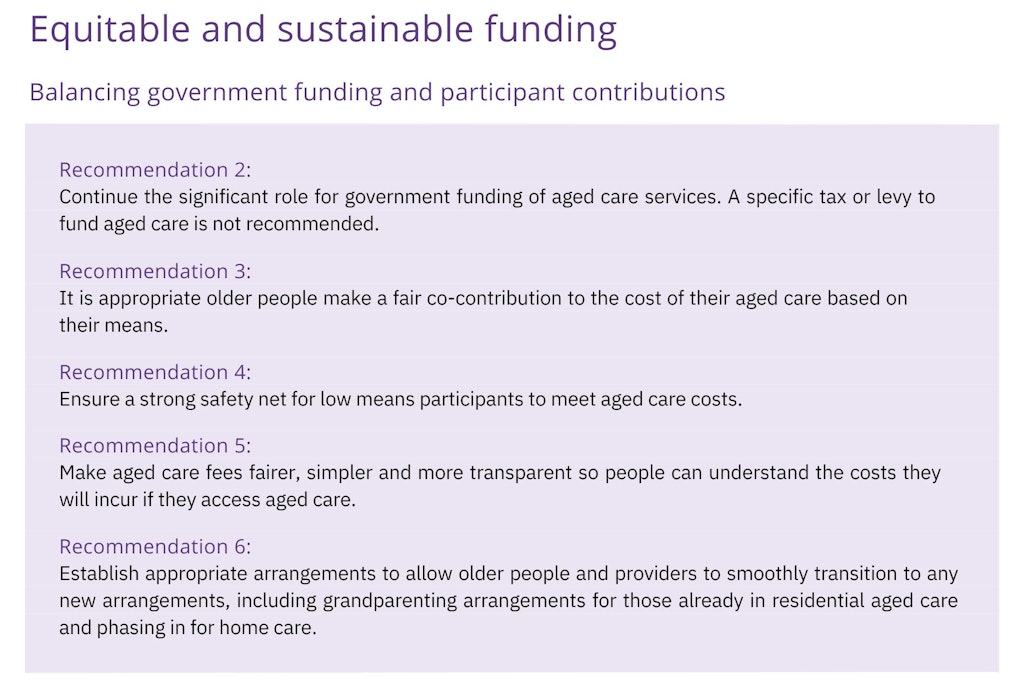Taskforce recommendations receive a warm reception, further clarification needed
Published on 13 March 2024 (Last updated on 21 March 2024)

Although the dust is far from settled following the release of the Aged Care Taskforce’s final report and recommendations, industry leaders have continued to share their thoughts.
Hello leaders have collated their insights as public perception towards the news continues to evolve.
Dementia Australia supports home care focus
The Aged Care Taskforce has focused equally on residential and home care elements in their recommendations, recognising the growing number of older people who want to live and age at home.
This focus includes Recommendation 8 which calls for the introduction of Support at Home participant co-contributions that vary based on the type of service accessed. The Taskforce said this approach would also allow increased access to more services in their home than previously possible, including dementia support.
“There are more than 421,000 people living with dementia in Australia. With this high prevalence, funding arrangements must ensure that the system can deliver quality dementia care regardless of where the care is received – both at home and in residential aged care settings,” Dementia Australia Chief Executive Officer (CEO) Maree McCabe AM said.
“An aged care funding model must enable the delivery of quality, individualised care to older people with dementia, empowering them in their choices and upholding their human rights. It also needs to ensure that regardless of the care setting, people living with dementia receive safe and appropriate care delivered by a skilled workforce.”

Ms McCabe also welcomed the Taskforce’s recommendation to make aged care fees fairer, simpler and transparent (Recommendation 5) as it would assist people in understanding their aged care costs in an often complex system.
Retirement Living Council says aged care can follow its lead
While the recommendations themselves are not explicitly linked to retirement living, the promotion of ageing at home is a sure sign that the Taskforce wants to see independent living opportunities strengthened. This is where retirement living villages and communities are integral.
The Retirement Living Council (RLC) Executive Director Daniel Gannon said the current aged care system is failing to meet demand and increased support for ageing at home will relieve a considerable amount of financial burden.
“It’s no longer possible to talk about the future of aged care without considering the important health and housing value proposition of privately funded retirement communities,” Mr Gannon said.
“Older Australians deserve access to quality care and wellbeing services and the retirement living sector is uniquely equipped to deliver them more efficiently and effectively, therefore reducing costs and for both government and the end user.”

Mr Gannon also promoted the benefits of moving to a user-pays system which is an all-too-real possibility for aged care after the Taskforce recommended that wealthier Australians pay more for their services through increased co-contributions (Recommendation 3).
“Under the right conditions, the private sector can take the lead in breathing life into fresh and upgraded facilities, often sidelining the need for government dollars – and at times, saving government significant future costs,” he added.
Clarity on the safety net essential for OPAN
As a representative of older Australians, OPAN supported the release of the Taskforce’s recommendations. However, they have aired concerns over the proposed safety net.
Where Recommendation 3 said it is appropriate for older people to make a fair co-contribution based on their means, Recommendation 4 said it is essential to ensure there is a strong safety net for low means participants to meet aged care costs.
Some have questioned whether co-contributions for wealthier consumers would create a two-tiered system that advantages those who can better fund their aged care services, including Samantha Edwards, OPAN Director Policy and Systemic Advocacy.
“We need to ensure our aged care system is sustainable and can meet the needs of our growing ageing population. It is also critically important that we don’t create a two-tiered system, where those who can afford to pay get a first-class service, and those who can’t afford to pay receive inadequate care,” Ms Edwards said.

“During the consultation process for this report our message was clear: we must ensure equitable access to aged care services, especially for our most vulnerable people, regardless of their capacity to pay. We also called for strict safety net provisions to ensure our most vulnerable older people don’t fall through the cracks.”
Ms Edwards said the Government must also ensure that all fees, charges and service costs are fully transparent if it adopts a users-pay system for aged care. This falls under Recommendation 5 as part of the Taskforce’s goal to create equitable and sustainable funding for the sector.
Want to hear what Aged Care Taskforce members Tom Symondson (CEO, ACCPA), Nigel Ray (Taskforce Deputy Chair) and Grant Corderoy (Partner, StewartBrown) said about the recommendations? Here’s a recap of the webinar hosted by the Department of Health and Aged Care.